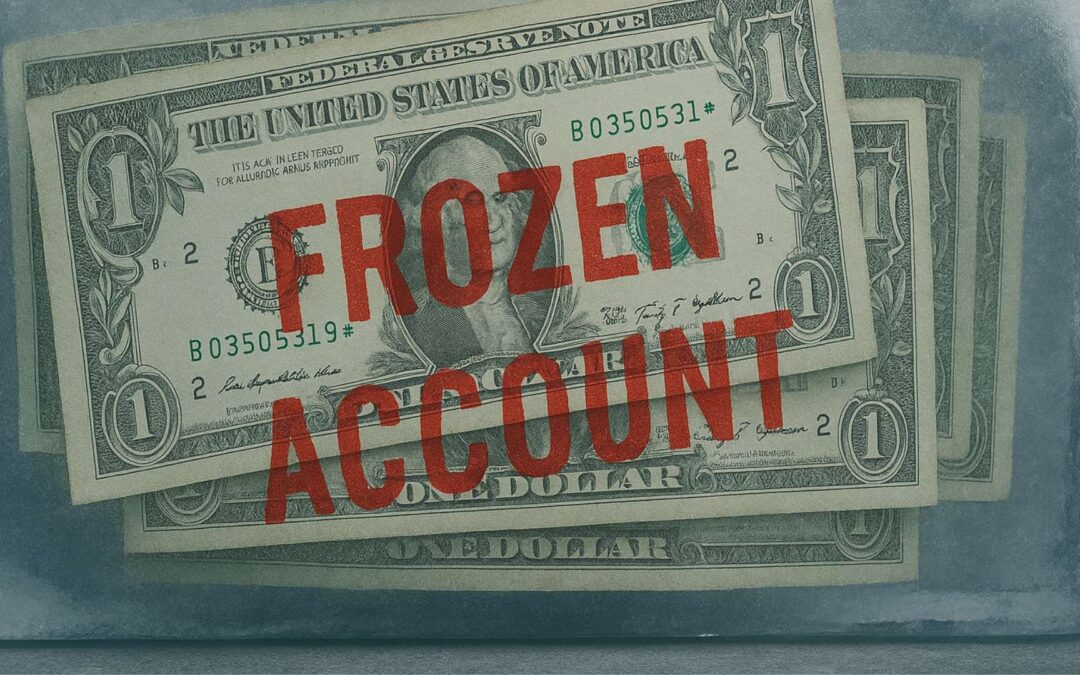Frozen accounts often strike without warning. For many online merchants, especially those in high-risk sectors, this is not just a temporary inconvenience. It can disrupt operations, damage client trust, and cause serious financial strain.
This article follows the real story of a European merchant who experienced a sudden account freeze while running a legal and profitable business. We explain what happened, why it happened, how the merchant responded, and how the business eventually recovered. Along the way, we share practical lessons that any merchant can apply to reduce risks and stay prepared.

The business – a digital coaching platform
The story begins with a digital coaching company based in Central Europe. The business offered online mentoring programs in health and wellness, targeting clients across the EU and the UK. It used a popular non-banking financial institution (NBFI) for its business account and payment services, including virtual IBANs and card processing.
The company had been operating smoothly for over a year, receiving payments in multiple currencies and paying out affiliate commissions every two weeks. Monthly revenue was stable, averaging around €70,000, with most clients paying by card or bank transfer.
At first, everything worked well. The onboarding had been fast, fees were reasonable, and the dashboard gave full visibility into incoming and outgoing payments. However, behind the scenes, things were not as secure as they appeared.
The problem: a sudden account freeze without warning
One morning, the merchant logged into the account as usual. But this time, found that payouts were being delayed. A banner appeared at the top of the dashboard: “Account temporarily restricted due to ongoing review.”
At first, the merchant thought it was a minor technical issue. But by the end of the day, the account was fully frozen. The company could not send payments, withdraw funds, or access customer balances. Customer service provided only a generic explanation: “We are conducting a review in line with regulatory guidelines.”
This situation quickly turned critical. The merchant had €42,000 in the account, owed commissions to over 30 affiliates, and had subscription payments scheduled for the next billing cycle. There was no clear explanation of what triggered the freeze.
The cause – a chain reaction from a third party
After a few tense days and several follow-up emails, the merchant received more details. The frozen account was not due to fraud or non-compliance by the business. Instead, it was a reaction to an external event.
As it turned out, the NBFI’s own banking partner, responsible for providing settlement accounts, had its access to a key payment network suspended by a local regulator. As a result, several client accounts, including the coaching business, were locked down automatically.
This is a classic case of settlement risk. Even though the coaching company had done nothing wrong, its money was affected because the NBFI’s upstream provider was in trouble. The merchant had no direct relationship with the bank holding the funds and therefore had no legal way to speed up the process.
The impact of frozen operations and client pressure
In just a few days, the merchant began receiving messages from affiliates and clients. Some asked when they would be paid. Others feared the business was collapsing. Tensions rose as refunds were delayed, and support tickets piled up.
To make things worse, the merchant’s payment provider stopped accepting new transactions. Customers trying to renew subscriptions were met with payment errors, and revenue dropped overnight.
This is the part many businesses underestimate. When funds are frozen, the real damage goes beyond the lost money. It impacts trust, reputation, and momentum. In this case, the merchant had to act fast to prevent long-term damage.

The recovery plan – a step-by-step approach
Although the situation felt overwhelming, the merchant did not panic. Instead, the team followed a structured plan to recover control and keep the business alive. Here’s how they did it:
1. Opening of a backup account within 48 hours
The first step was setting up a new business account with another provider. This time, the merchant chose a more established EMI with clearer safeguarding terms and better transparency on fund flows. The new account was activated in two business days.
2. Switching of incoming payments to the new account
Next, the team updated billing details on all sales pages, checkout links, and recurring invoices. Clients were notified by email and offered a one-time discount for switching payment methods promptly. Within five days, 70 percent of recurring users had updated their details.
3. Open communication with clients and affiliates
The merchant sent out a clear and honest update explaining the situation without blaming any provider by name. The message reassured partners that the issue was temporary and that steps were being taken to resolve it. This helped reduce panic and kept communication channels open.
4. Negotiating partial payouts from the frozen account
By maintaining regular contact with the provider, the merchant eventually negotiated a partial release of funds. Around 30 percent of the locked balance was paid out two weeks later, which allowed the business to catch up on affiliate payments.
5. Documentation of the entire experience for legal backup
To prepare for any future disputes, the merchant kept a full timeline of all communication, screenshots, and contract terms. While legal action was not required in the end, this documentation helped push the provider toward a faster resolution.
The outcome is a gradual but full recovery
It took just over five weeks for the merchant to fully restore operations. By the end of the second month, all clients were back on a working payment system, most affiliates had been paid, and the frozen funds were gradually released.
Although the experience caused stress and lost revenue, the business survived. Even more, the merchant came out stronger, with a better setup, more control, and clearer risk management policies.

Key lessons for other merchants
This case shows that even well-managed, legal businesses can be affected by settlement risk. Here are the most important takeaways for others in similar situations:
Always have a backup payment provider
Do not wait until your account is frozen. Even if your primary setup is working well, keep a secondary provider ready. This gives you options when things go wrong.
Know where your funds are actually held
Ask your provider where your money goes after a payment is made. Understand the chain between you, the platform, and the settlement institution. The more direct control you have, the better.
Stay informed and communicate early
If a problem arises, act quickly. Communicate with clients, partners, and affiliates before they start to worry. Transparency builds trust, even during tough moments.
Keep records of all communication
In case of legal or financial disputes, you will need documentation. Keep copies of emails, terms of service, agreements, and internal notes.
Choose providers with strong licensing and clear contracts
Some payment providers are more transparent than others. Choose those that are regulated in stable jurisdictions and that clearly explain how client funds are protected.
Bottom Line
Account freezes can happen for reasons beyond your control. As this case study shows, even a solid business with good practices can find itself locked out of its own money due to decisions made by third-party providers.
However, recovery is possible. With a calm approach, a backup plan, and strong communication, you can reduce the damage and come out of the situation even stronger.
In 2025, every merchant, especially those working in high-risk sectors, should treat settlement risk as a real and manageable part of running a global business. By learning from real cases like this one, you can prepare today and avoid bigger problems tomorrow.
If you want to know more about this matter, don’t hesitate to schedule a free consultation with our team.
For more industry insights, read our article “2025 Economic Substance Rules: What Offshore Companies Must Prove?”
Disclaimer
Widelia and its affiliates do not provide tax, investment, legal or accounting advice. Material on this page has been prepared for informational purposes only, and is not intended to provide, and should not be relied on for, tax, investment, legal or accounting advice. You should consult your own tax, legal and accounting advisors before engaging in any transaction. Please consult https://widelia.com/disclaimer/ for more information.









